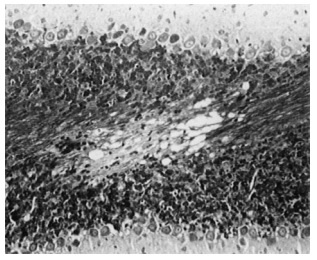The Virulence of a Mouse-Adapted Semliki Forest Mechanism: a Model to Study the Pathogenesis
DOI:
https://doi.org/10.31033/abjar.2.3.1Keywords:
virulence, pathogenesis, semlikiAbstract
Vectors from the Semliki Forest virus (SFV) have been created to offer a simple method for expressing protein-encoding sequences in almost any animal cell. Acute encephalitis, subacute demyelinating meningoencephalomyelitis, and persistent subclinical central nervous system (CNS) infection are possible infection outcomes in mice, depending on age and viral strain. Infected mice under 12 days old exhibit severe symptoms of all viral types. While the A7 (74) strain is virulent, the L10 strain is equally pathogenic in mice older than 14 days.
Downloads
References
Aguilar, P. V., Paessler, S., Carrara, A. S., Baron, S., Poast, J., Wang, E., Moncayo, A. C., Anishchenko, M., Watts, D., & other authors (2005).Variation in interferon sensitivity and induction among strains of eastern equine encephalitis virus. J Virol, 79, 11300–11310.
Boyd, A., Fazakerley, J. K., & Bridgen, A. (2006). Pathogenesis of dugbe virus infection in wild-type and interferon-deficient mice. J Gen Virol, 87, 2005– 2009.
Bradish, C. J., Allner, K., & Maber, H. B. (1971). The virulence of original and derived strains of Semliki Forest virus for mice, guinea pig sand rabbits. J Gen Virol, 12, 141–160.
Cameron, K. R., & bradish, C. J. (I972). The kinetics of haemagglutination by Semliki Forest virus: a new sedimentation-enumeration method. Journal of General Virology, I6, I35-I52.
Deuber, S. A., & Pavlovic, J. (2007). Virulence of a mouse-adapted Semliki Forest virus strain is associated with reduced susceptibility to interferon. J Gen Virol, 88, 1952– 1959.
Dussaix, E., Lebon, P., Ponsot, G., Huault, G., & Tardieu, M. (1985). Intrathecal synthesis of different a-interferons in patients with various neurological diseases. Acta Neurol Scand, 71, 504– 509.
Fazakerley, J. K. (2004). Semliki Forest virus infection of laboratory mice: a model to study the pathogenesis of viral encephalitis. Arch Virol Suppl, 18, 179–190.
Grieder, F. B., & Vogel, S. N. (1999). Role of interferon and interferon regulatory factors in early protection against Venezuelan equine encephalitis virus infection. Virology, 257, 106–118.
Koerner, I., Kochs, G., Kalinke, U., Weiss, S., & Staeheli, P. (2007).Protective role of beta interferon in host defense against influenza Avirus. J Virol, 81, 2025–2030.

Downloads
Published
How to Cite
Issue
Section
ARK
License
Copyright (c) 2023 Abhimaan Tiwari, Dr. N. Tiwari

This work is licensed under a Creative Commons Attribution 4.0 International License.
Research Articles in 'Applied Science and Biotechnology Journal for Advanced Research' are Open Access articles published under the Creative Commons CC BY License Creative Commons Attribution 4.0 International License http://creativecommons.org/licenses/by/4.0/. This license allows you to share – copy and redistribute the material in any medium or format. Adapt – remix, transform, and build upon the material for any purpose, even commercially.










